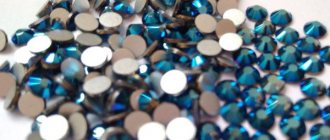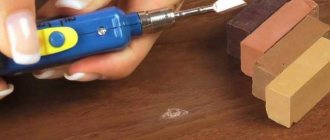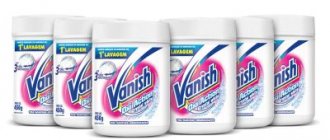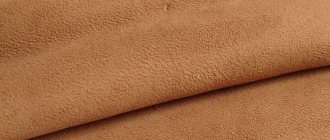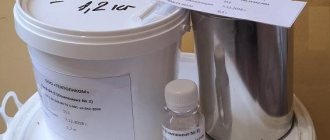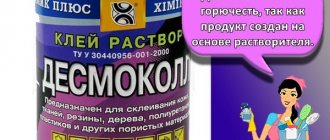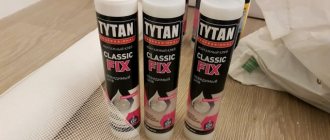Epoxy adhesive is rightfully considered one of the most popular and universal binding materials. In addition to the fact that it reliably connects the surfaces of almost any materials, the substance has leveling and electrical insulating properties.
The strength of the adhesion is due to the ability of the product to penetrate deeply through tiny cracks into the surfaces being bonded.
If we add to the product’s qualities resistance to any solvent chemical compositions, we get an almost ideal adhesive product.
Universal epoxy adhesive
Main component of the product
The adhesive has its unique qualities, thanks to which the composition remains in demand in many areas for many years, due to epoxy resin. The main component of the product was first obtained through a synthesis process in 1936 in France. The first oligomer-based adhesive was released in 1940 and was popular with consumers.
Epoxy resin is used not only for the manufacture of adhesives. The substance is used as a constituent ingredient in the manufacture of plastics, varnishes, carbon fiber and other materials. The oligomer has found its application in mechanical engineering, construction and other areas where material strength and adhesion are important.
Bonding technology
A good result is obtained if the surface is properly prepared for applying glue. Therefore, you need to understand the features of different bases. Wooden, plastic and metal elements are most often glued; working with them will be described in more detail below.
A good result is obtained if the surface is properly prepared for applying glue.
Plastic
It is possible to glue many types of plastic at home, but you should not use polypropylene and formaldehyde types. First, plastic of an easily glued type is prepared, improving adhesion; sandpaper treatment is required. After the base is degreased, it is permissible to use only ethyl alcohol. When the layer is applied, a load is created on the object in order to obtain a good fixation; the load can be removed in an hour and a half.
When the layer is applied, it creates a load on the object to get a good hold.
Tree
The wood needs to be cleaned of dirt, after which the composition can be applied. The tool you can use is a spatula or a brush. The adhesive layer is applied evenly, the parts are pressed and left until completely hardened.
The parts are pressed and left until completely hardened.
Metal
The metal must be well cleaned in advance, greasy stains must also be removed in order to obtain high-quality adhesion. Well, then using a convenient method, apply glue to the surface and connect them according to the scheme described above. Act carefully; it will be difficult to remove a frozen stain.
Act carefully; it will be difficult to remove a frozen stain.
Composition of adhesive
Epoxy adhesives must contain hardeners in addition to resin. In addition, solvents (acetone, alcohols), fillers and plasticizers are added to the composition. Solvents occupy a small part of the volume and are introduced to speed up the hardening process. The same substances can be used to dissolve the resin to reduce viscosity.
The glue contains resin
Plasticizers add impact strength and strength to the adhesive in joints subject to bending, making it less brittle. To increase the quality of heat resistance and mechanical strength, fillers are introduced into the epoxy. It can be graphite, aluminum, or porcelain powder. Often crushed mica or quartz sand acts as such.
Safety regulations
To ensure that working with glue does not affect your health, you should adhere to the following safety rules:
- Use protective gloves and respirators, since the composition contains substances that can cause allergies and dizziness, and provoke attacks of bronchial asthma.
- Work in a well-ventilated area. If the ventilation system is faulty or missing, you need to open the windows.
- Do not eat or drink while stirring or applying the adhesive.
- Do not allow children to work with epoxy compounds.
- Make sure that there are no sources of open flame (including lit cigarettes) nearby.
Types of glue
There are several forms of epoxy glue. The products differ not only in composition, but also in consistency.
The compositions can be either a transparent, viscous, heat-resistant liquid, or a paste or powder. You can find hard bars.
Two-component epoxy adhesive is a package of two tubes: the first contains resin with filler, and the second contains a hardener. To prepare an adhesive composition with
The contents of both tubes must be mixed to start the polymerization process. How to dilute epoxy glue is detailed in the attached instructions. Thus, you need to prepare the required amount of product. The resulting mass hardens very quickly, so it must be used immediately.
There are epoxy adhesives from different manufacturers.
Paste glue can also be purchased as separate ingredients, which are suggested to be diluted immediately before use. Some adhesives must be exposed to high temperatures to achieve proper curing. This product is characterized by increased connection strength.
Film adhesive is a transparent material with adhesive properties. Such products use a modified resin. Synthetic fabrics are used to reinforce the film. When reviewing this product, in most cases its special strength and resistance to thermal and oxidative effects are indicated.
How to glue plastic
The type of plastic has been determined and the required glue has been selected. How to properly glue plastic objects:
- Parts should be cleaned. If necessary, degrease the item with soap solution or ethyl alcohol. A clean surface has greater adhesion and objects will be easier to stick to.
- It doesn't hurt to lightly sand the surfaces to roughen them up. This way the glue will stick better.
- Two-component compositions are mixed only after surface preparation.
- If parts are coated with glue using a brush, then use an object with artificial bristles.
- The glue is applied in such an amount that when compressed, its excess does not protrude to the surface.
- You need to squeeze objects together firmly, but carefully.
- The duration of adhesion of materials depends on the selected adhesive.
Advice! Use a needle to glue a thin crack.
Sometimes you need to attach a variety of materials to plastic: wood, glass or metal. In this case, the glue must take into account the characteristics of the two surfaces being connected, and not just the plastic.
Glue Super moment
Tips for working with plastic :
- For external work, waterproof glue is used.
- Despite the high temperature that the glue can withstand, plastic objects themselves should not be exposed to it.
- When working with contact adhesive, it is necessary to ventilate the room.
- The best adhesive for marking 7 (O) is epoxy. This type is also suitable for polystyrene.
- If there is no marking on the product, then proceed from this: for plastic toys and artificial glass, polystyrene is used mainly; For bottles, buckets and boxes, glue designed for polypropylene and polyethylene is suitable.
Take the time to study the labeling of plastic products and glue. If repairing small toys like Lego is a simple process, then for more serious work the familiar Secunda glue may not be suitable for everyone.
Read also: The cost of a centimeter of a semi-automatic welding seam
Plastic products surround us everywhere. Almost everything is made from this material - from children's toys to furniture and components for cars. Ease of processing, lightness and strength are the main advantages of plastics. However, nothing lasts forever. Like any other material, plastic can break under increased loads or impacts.
The first thing that comes to mind in this case is that a broken object can be glued together. But here a new problem arises: the universal glue at hand turns out to be powerless in solving this problem. How to be in this case? Is it really possible to reliably glue plastic together ?
Yes, many types of plastic can be glued together, and, as they say, “tightly”. You just need to determine the type of material, choose the right adhesive composition and follow all the recommendations of the adhesive manufacturer.
There are several types of plastic, each of which has a specific set of properties and characteristics. On many plastic products you can find the corresponding marking in the form of a triangle with arrows and an alphanumeric designation.
The following types of plastic can be found in everyday life:
- HDPE, LDPE, PEBD (also designated by numbers 2, 4) - polyethylene;
- PP (indicated by number 5) - polypropylene;
- PVC (3) - polyvinyl chloride (PVC);
- PS (6) - polystyrene;
- PC, O (7) - polycarbonate, polyamide and other types of plastics.
Having discovered these symbols, you can easily determine the type of material and accurately select the most suitable glue (the plastic designation is indicated on the glue packaging).
For strong and quick gluing of most plastics found in everyday life, reaction adhesives that contain a hardener are suitable.
This type of adhesive composition includes the well-known “second” cyanoacrylate-based adhesives, the so-called “Super Moment”, Akfix, COSMO and the like.
Hardening of this glue occurs almost instantly after joining the bonded surfaces under the influence of oxygen.
This type of adhesive works best in rigid, fixed joints that require high strength. As a rule, the adhesive seam in this case exceeds the strength of the glued material itself.
Reaction adhesives can be one-component (ready-to-use) or two-component, which are prepared immediately before use by mixing the two components. Both one- and two-component plastic adhesives can contain polyurethane, various epoxy resins, and polyesters.
For gluing flexible plastics, as well as products that will subsequently be subject to bending loads, contact adhesives are more suitable - “Moment Plastic”, BF-2, BF-4, etc.
Contact glue is applied in a thin layer to both surfaces to be glued, left for 5-15 minutes, after which the parts are pressed against each other with force.
The force applied to the parts being glued is critical.
Possibility of using epoxy glue in everyday life
The properties of epoxy glue allow it to be widely used in production and for domestic needs.
High adhesive ability is maintained when connecting surfaces of a wide variety of structures and quality (metal, wood, stone, porcelain, glass, etc.). Knowing how to use epoxy correctly, you can join almost anything.
Watch the video to find out more:
Due to its water resistance, the adhesive can be used for installing plumbing fixtures or for exterior renovation work. Car enthusiasts use this product to secure parts in places exposed to oils, gasoline or high temperatures.
Marking of plastics
Manufacturers of plastic products must put a recycling symbol on their products, which looks like an equilateral triangle with arrows on the sides, which symbolize recycling.
Inside the triangle there may be numbers from 1 to 7, as well as letter abbreviations, which, in fact, indicate the type of plastic used to make the product.
What does the marking mean:
- RET. Low-density polyethylene, film, bags and transparent packaging for bulk or liquid products are made from this plastic.
- Also low-density polyethylene, but more dense in structure. Shrink film and packaging bags are made from it.
- V (PVC) – PVC. It is used in the manufacture of household non-food tableware and plastic window frames.
- High pressure polyethylene, low density. Packaging bags for food, drinks, toys, water pipes for drinking water.
- R S. Polystyrene - disposable tableware, food processor housings. It is noteworthy that this material is non-toxic.
- RR. Polypropylene is a heat-resistant (up to 150°C degrees) chemically inactive plastic. Hot water fitting, toys, pipes, medical equipment and ventilation systems, blood pumping, etc.
- O Other (others). Plastics that do not belong to any of the 6 groups, as well as with inclusions of metal, paper and other substances.
Unfortunately, a unified system for unifying adhesives with manufactured plastics has not been developed, so you need to carefully read the information on the packaging of bottles and tubes.
Selection of adhesives for these plastics:
- PC-polycarbonate (covering greenhouses, canopies).
- ABS – acrylonitrile copolymer.
- PP – polypropylene.
- PPMA – plexiglass.
- PE – polyethylene.
- PVC- PVC
- PS – polystyrene.
- PA 66 - polyamide materials.
- PUR – polyurethane.
Good to know > Transparent South Korean epoxy resin Ker-828
Review of common brands
Universal epoxy adhesive EDP has been widely popular since Soviet times.
Common EDP glue (click to enlarge)
The two-component composition, according to the description, is characterized by high strength and low shrinkage in operation, and does not lose its qualities from exposure to moisture. It is usually used to repair furniture and plastic parts of household appliances. EDP epoxy glue is indispensable for restoring a car headlight or bumper. EDP brand products are available in packages with different volumes.
Adhesive from the Spanish manufacturer Moment Super Epoxy Metal, as the name suggests, is intended for joining metal parts. For this purpose, you can use domestic adhesive plasticine Contact “cold welding”, which has gained particular popularity among car enthusiasts due to the possibility of emergency repair of a gas tank.
From the video you will learn more:
Preparing two-component adhesive for use
The instructions for using two-component epoxy adhesive indicate in what proportions to combine the resin with the hardener. Typically, a ratio of 10 to 1 is suggested. Sometimes the manufacturer advises heating the resin in a water bath before diluting it. The components are mixed for several minutes.
It is permissible to add metal powder or dry dye to the resulting mixture. However, it is better to ensure that the product does not lose its original plasticity. The prepared product should be used within an hour.
